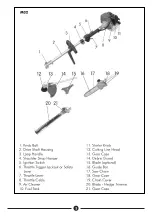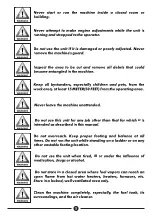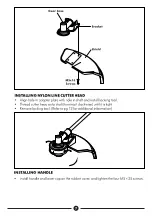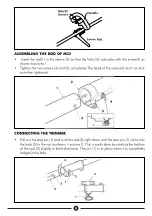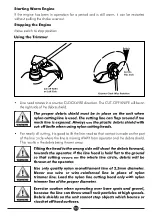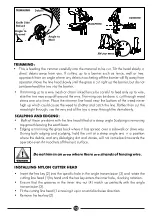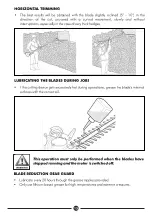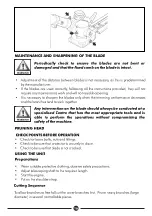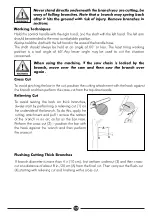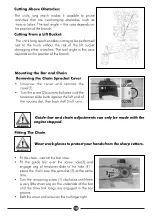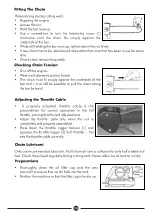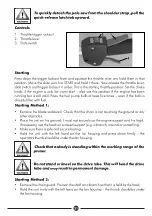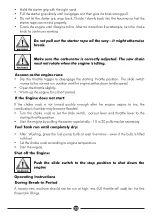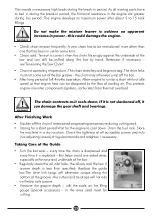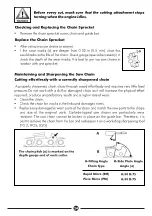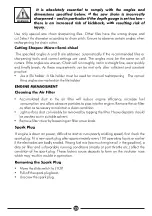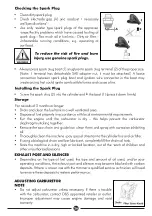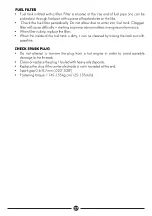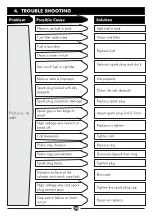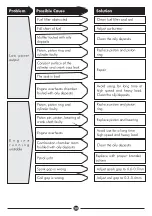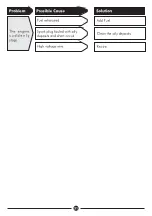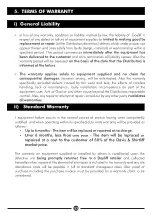
17
WARNING
Never stand directly underneath the branch you are cutting, be
wary of falling branches. Note that a branch may spring back
after it hits the ground with risk of injury. Remove branches in
sections.
Working Techniques
Hold the control handle with the right hand, and the shaft with the left hand. The left arm
should be extended to the most comfortable position.
Always hold the shaft with the left hand in the area of the handle hose.
The shaft should always be held at an angle of 60° or less. The least tiring working
position is a tool angle of 60°.Any lesser angle may be used to suit the situation
concerned.
WARNING
When using the machine, if the saw chain is locked by the
branch, move over the saw and then saw the branch over
again .
Cross Cut
To avoid pinching the bar in the cut, position the cutting attachment with the hook against
the branch and then perform the cross-cut from the top downwards.
Relieving Cut
To avoid tearing the bark on thick branches,
always start by performing a relieving cut (1) on
the underside of the branch. To do this, apply the
cutting attachment and pull it across the bottom
of the branch in an arc as far as the bar nose.
Perform the cross-cut (2) – position the bar with
the hook against the branch and then perform
the crosscut.
Flushing Cutting Thick Branches
If branch diameter is more than 4 in (10 cm), first perform undercut (3) and then cross-
cut at a distance of about 8 in./20 cm (A) from the final cut. Then carry out the flush-cut
(4),starting with relieving cut and finishing with a cross-cut.
4
3
A

